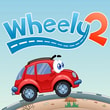The hallway smells like dust and old prayers. Wallpaper peels in thin curls as if the house is trying to shed its memories. Somewhere deeper, a slipper scrapes the floor, slow and patient, like a metronome for bad decisions. Granny Horror Game 2020 does not ask if you are ready. It asks if you can listen. Ten levels, ten lessons in caution, and a rule carved into every plank of wood you touch. Be careful and quiet. Do not turn on the light. If you forget, the house will remind you, and Granny will do the rest.
🕯️ Silent Steps In A Loud House
You learn quickly that movement is a language. Walk, and the floor murmurs a warning. Run, and the hallway reports you like a town crier. Crouching trims your silhouette and softens your steps, but it steals speed you might need in the next panic. Doors have moods. A gentle pull earns a sigh; a hard swing slaps the air and tattles. Rugs are allies. Bare boards are microphones. You start to map the building with your ears first and your eyes second. Five soft steps from the dresser to the vent. Three careful slides past the creaky seam near the pantry. Seven paces along the corridor where the carpet forgives you. The house is not cruel. It is honest, and honesty is terrifying when someone is hunting you.
🔎 Keys Codes And The Grammar Of Escape
Every object is half a sentence begging for its other half. A brass key with teeth worn thin belongs to a door that hides behind a crooked painting. A fuse labeled 3 fits the box that hums in the laundry, but only after you notice the cable that slinks beneath a door you ignored. A screwdriver in the study sits beside a note that mutters blue first; later you find a wire bundle that turns the scribble into sense. This is not fetch quest noise. Clues belong to rooms, and answers live where logic would put them if the house were polite. When a lock finally clicks, it is not loud, but the sound rings like permission inside your ribs.
🧟 Granny Hears Before She Sees
She is not random. She is routine with upgrades. At first, she loops the obvious—foyer, stairs, kitchen, cellar—and hums a tune that makes you grind your teeth. Then she learns you. If you repeat a route, she waits where your nerve breaks. If you leave doors open, she follows that breadcrumb trail like a detective with time to burn. If you drop something heavy, her path bends toward the noise as if pulled by a magnet. Yes, there is a way to stun her once, maybe twice, if you find the right tool, but the victory is noisy and the clock keeps running. Respect her hearing like it is the final boss. Time big moves with ambient sound—thunder outside, kettle whistles, the generator waking up—and you will find breathing room you did not know the house had.
🎃 Ten Levels Of Escalation
Level one is a whisper. One key. One door. A chase that tops out before your heart does. Level two adds a fuse problem with a hallway detour that punishes impatience. By level five you are playing rhythm games with clocks and bells, counting beats between her footsteps to cross the foyer in the only safe window. Later levels remove lights entirely, and the only map you own is shape and distance. The last two are mean in the fair way: puzzles are legible, patrol loops are predictable, and every failure is traceable to a habit you can fix. Greed is punished. Smart courage is paid with seconds that stack into exits.
🧠 Puzzles That Belong To The Walls
Good escape design feels like the room itself is telling you how to solve it if you stop arguing and listen. A family portrait wall hides a hollow that opens when you rotate faces into an order implied by dates on a kitchen calendar. A hymn repeats a line four times; the foyer has four brass bells that answer that rhythm. A chessboard misses two knights; the study door has two horsehead handles that turn only after you place carved pieces in their slots. None of it is arbitrary. All of it is readable. The satisfaction isn’t just in unlocking the door—it’s in knowing why it had to be this door, this way.
👁️ Darkness Is A Tool Not A Punishment
The game warns you: don’t turn on the light. Believe it. Your flashlight, if you dare to use it, is a friend who cannot keep a secret. A beam paints your position on every surface. Candles are kinder but still gossip with your shadow. The best players memorize routes by feel and count. Three steps from bed to wardrobe. Two from wardrobe to vent. Slide, pause, breathe, go. Use light only to confirm a code or read a note, then kill it and move. Your memory is safer than electricity in this house.
🎧 Sound Draws The Map
Footsteps on tile travel farther than footsteps on carpet. The refrigerator hum in the kitchen hides a clumsy step if you tuck it between compressor cycles. Pipes above the bathroom groan like someone clearing their throat; that rumble masks a hinge if you time the push. The generator sings in a bright note when healthy and drops a register when you misplace a fuse. Learn these tones and you can navigate blindfolded, which is good, because the last thing you want is to trust your eyes in a place designed to lie to them.
🧪 Risk Small Win Small Risk Smart Win Big
This isn’t a pure stealth crawl. It’s a budgeting exercise for nerve. A cross-foyer sprint during thunder saves a minute. Sliding a chair to bait a patrol gives you a clean passage to the pantry. Cracking a side window lets a draft slam the wrong door at the right time. Boldness without timing is a death wish; boldness with timing is momentum. Stack advantages—pre-unlock the laundry chute, stage a valve near the boiler, cache the attic key by the stairs—and the final route becomes a straight spine of decisions you can make without thinking.
📝 Micro Habits That Save Runs
Leave doors as you found them unless you’re using them to misdirect. Keep one inventory slot free for the surprise that always arrives one room too late. Cache items near their puzzle homes to avoid noisy backtracking. Memorize two hideouts per room before you touch anything. Count to three before you exit a closet after she passes. Everyone rushes. That’s how she turns corners into cages. And breathe. Calm ears hear more.
🏚️ Story Written In The Margins
You won’t get cutscenes. You will get implications. Medicine bottles with dosages that don’t match. A calendar with one date circled and underlined twice. Photographs with faces rubbed away, not cut out—like someone couldn’t decide which memory to keep. A child’s drawing of the house with an extra door that doesn’t exist until you notice where the wallpaper pattern breaks. The narrative is a rumor that becomes a theory that becomes a motive. You are not here for lore—but lore is here for you, and it sharpens every decision once you start believing it.
🎮 Controls That Keep Fear Fair
Inputs answer when you ask. Crouch lands instantly. Doors understand the difference between coax and yank. Interactions snap without slippery edges. On Kiz10, restarts are quick enough that failure turns into rehearsal rather than punishment. When you slide under a bed at the last frame and survive by a hair, you feel skill, not luck. That’s the kind of honesty a stealth game needs to be addictive.
🌐 Why It Belongs On Kiz10
Instant play protects tension. No downloads, no detours, just the first creak and your first bad idea. Short sessions teach one new habit; long sessions happen by accident when a route finally clicks and the exit smells close. Performance is crisp in the browser, inputs are clean, and the site gets out of the way so the house can do all the talking. If you close the tab and still hear floorboards for a minute, that means it worked.
🏁 The Door You Earn
There will be a final chain that gives, a latch that chooses you, and a breath of night air that tastes like a promise kept. If you fail before that, you will know why—a step you rushed, a board you ignored, a light you trusted. And knowing why is the secret power this game hands you. The next run is already writing itself behind your eyes. Quieter. Smarter. Out.
 Coon Plutus and
Coon Plutus and













































